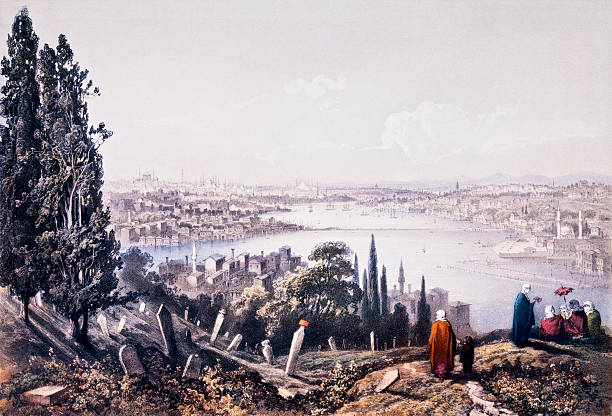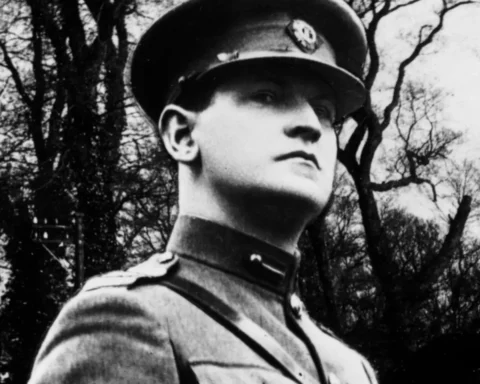The Ottomans ruled many regions from the Balkans to the Middle East. However, in the middle of the 18th century, they faced economic and political turmoil. The empire couldn’t keep up with developments in Europe and struggled with problems such as protracted wars, a deteriorated tax system, and a dispersed army.
.
Rapid industrialization steps had started in Europe at that time, historians call ”Victorian Era”. European traders and manufacturers, who had many products to sell, began to look for new markets. From West to East, the whole world was a great market for selling cheap + profitable products of European capitalists got.
Not suprisingly, Ottomans Empire was included to that great market too. Because of the years of capitulations, the Empire was an excellent trade center for many non-muslim entrepreneur, merchant and dealers. During those times, the Muslims in the Empire lacked logistic and technical knowledge, so they stick to old-fashion economic models such as farming, hand-crafting, fishery and grapery.
Also, the Muslim majority of ottomans Empire had to serve in military whether it requested, which is a reason why Turks in that time couldn’t achieved a great fortune for themselves.
Also, the essential needs for industralization such as coal, railroad infrastructure, and middle class weren’t suiting well for the progress at these years. Besides that, the reactionary movements in the Empire was quite strong until a particular time.
Janissaries in Istanbul prevented industrial steps that would begin with the hand of private enterprises too. According to Researcher-Author Haydar Kazgan, he reached the following pieces of information as a result of his archive research:
In 1822, an Armenian entrepreneur traveled to France, where he learned about the steam engine and its operation. But unfortunately, the Janisaries destroyed it with the provocation of the local weavers in the region. while it was going to start full production in the factory after the providing all necessary needs.
(The first match factory of the Ottoman Empire)
In the following years, the Janissaries also raided the bazaar established on the hills of Beyoğlu by English and French merchants, who got permission to sell their textile goods. This raid was again driven by local hand weavers in Istanbul.
In 1826, the year when the Janissaries were to be abolished, II. Mahmut made some reforms. However, since only the non-Muslim minority in the Ottoman Empire had the knowledge and financial capacity to build a factory, local Turkish artisans and capital owners preferred trade to production.
Towards the end of the 19th century, the Ottoman Empire was still falling apart through inexpensive, pointless and tiring wars. But slowly a consciousness began to settle. Empire have had lost many lands from the Europe, Africa and Asia.
Some intellectuals, pashas, writers and poets from the Turkish society understood the importance of corporatization and industrialization as well as education and reformization of society.
The Committee of Union and Progress (İttihak ve Terakki Cemiyeti in Turkish) seized power, removing Abdulhamid the Second from the crown, after a couple of more exhausting conflicts that the Empire had at that time.
Efforts of Empire’s Minister of Finance, Cavit Bey, also affected the economic perceptive of the Ottomans Empire. Therefore, Cavit Bey’s economic plans would also be the basis for the future Turkish Republic.
On 14 December 1913, the Ottoman Empire’s first private enterprise law, the Industry and Incentive Law, was enacted. However, it could not be implemented due to the conditions of the Great War, which would come “unfortune” a year later.
Ottoman Empire at that time, was considering to be neutral in that great conflict; however, the Young Turks thought that Germans would win the war. In the aim of restoring the old frontiers that Empire had in past, Ottoman Empire joined the war siding with Central Powers.
Germans, on the other hand, they agreed to Ottoman Empire join to their side as time-saving for them, for the Empire’s geographical location. In conflict, Ottomans had fought at many frontiers without complaining about whether they were fighthing. Nevertheless, the capitulation was inevitable. After the Armistice of Mudros, Ottomans agreed to withdraw from the Great War. As a result, some parts of Anatolia and Istanbul were occupied by the Allied forces.
 The Liberation Campaign of Kemal’s was ongoing at that time. He decided to convene for new Turkish goverment’s economical policy in İzmir, between 17 February-4 March 1923. This congress shows that the revolutionary Turk Mustafa Kemal was thinking about his country’s economical situation. He was thinking about it even after the occupation of foreign countries.
The Liberation Campaign of Kemal’s was ongoing at that time. He decided to convene for new Turkish goverment’s economical policy in İzmir, between 17 February-4 March 1923. This congress shows that the revolutionary Turk Mustafa Kemal was thinking about his country’s economical situation. He was thinking about it even after the occupation of foreign countries.
Moreover, this congress indicates that it will build the Modern Turkish Republic on the foundations of the bourgeois revolution. General decisions taken after the conference can be outlined as follows:
1 -We need to establish industrial branches that rely on domestically grown raw materials.
2 – We should switch to a factory and large enterprise production model from craftwork and manual labor
3 – The state should gradually adopt economic views. Enterprises that cannot be established by the private sector should be managed by the state.
4 – the Givt have to establish A State Bank to provide loans to private enterprises.
5 - In order to withstand foreign competition, the industry must be established collectively and as a whole.
6 -Avoid monopolies established by foreigners.
7. Encourage industry and establish national banks.
8. Establish the railway construction program.
9 – We should call the laborer class ”Workers” instead of using the word ”Amele”. ( Its English translation is serf,)
10 – The govt should recognise the right to union.
Izmir Economics Conference was helpful to build a base economical code for the young Turkish Republic. During the presidency of Mustafa Kemal, Turkish Republic tried stick to these economical principles.
The young Republic successfully created industrialized regions like Istanbul, Izmir, Bursa, Ankara, and Izmit with this economic view.
The Republic of Turkey initially followed a liberal economy until the 1929 Great Depression, then switched to a state-capitalist economy. However, political conflicts, mismanagement of factories, delayed privatization, and corruption hindered ottomans to major progress in industrialization.
Image Sources:
1. Image Source
2. Image Source
Academic Sources:
1. 101 an Economics Story by Şafak ALTUN
2. OSMANLI EKONOMİK POLİTİĞİNE KISA BİR BAKIŞ (XVIII-XIX YÜZYILLAR) by Cihat ÖZGÜN (https://dergipark.org.tr/tr/download/article-file/144978)
3. The Ottoman Industrial Revulation by Edward C. Clark: https://www.cambridge.org/core/journals/international-journal-of-middle-east-studies/article/abs/ottoman-industrial-revolution/A3F9C188B74F4DD9626E9879BD7122D4
4. https://www.thothios.com/c-1750-to-1900/unit-5-revolutions/5-8i-reactions-to-industrialization-reforms-and-modernization-in-japan-china-and-the-ottoman-empire/#:~:text=Limited%20Industrialization%3A%20Despite%20some%20success,for%20weapons%20and%20military%20technology.












